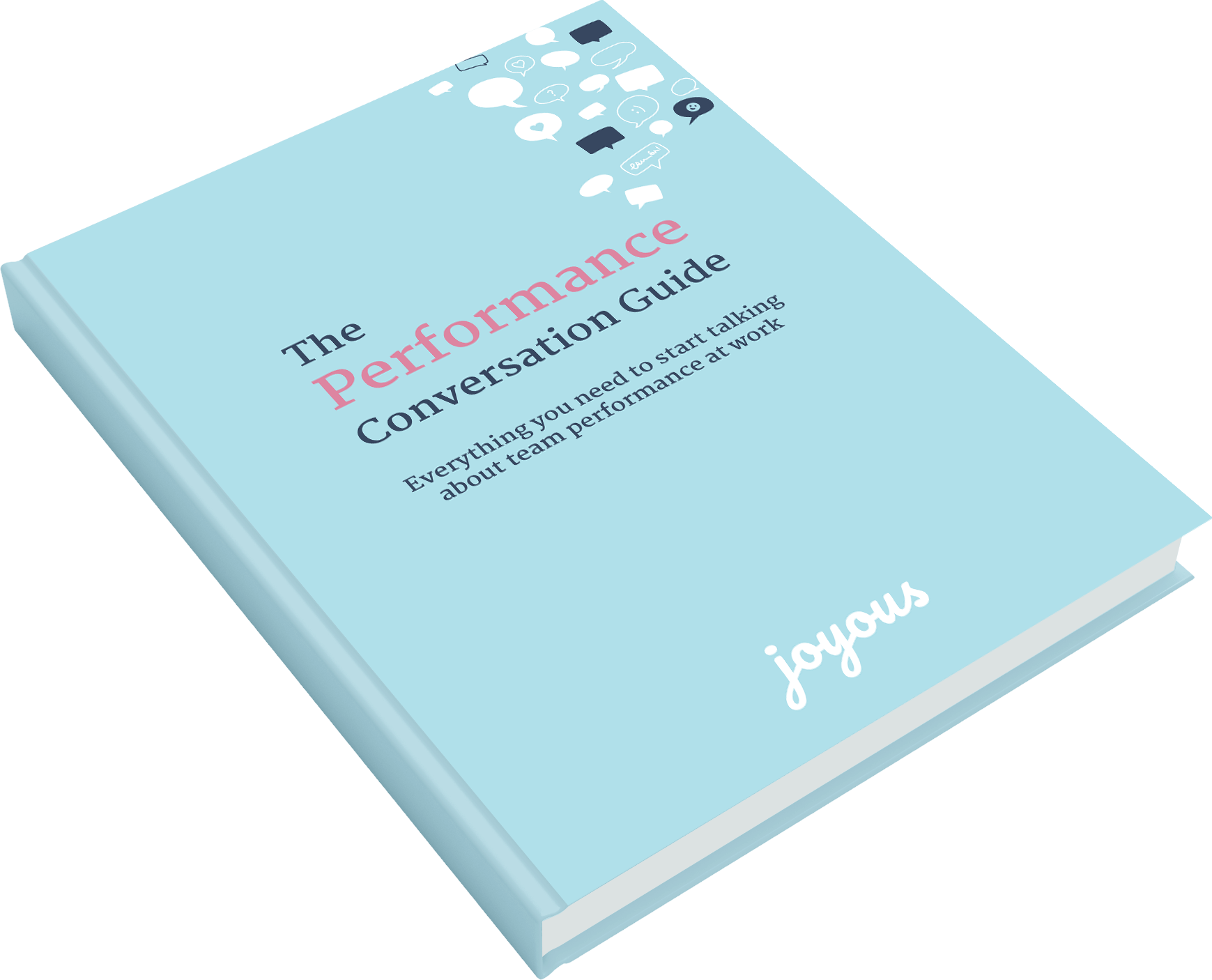Start having regular, constructive conversations about performance.
Because your people deserve more than an annual review.

Performance management should be a continuous process, as regular check-ins are necessary to make sure objectives stay on track.
1. Set objectives collaboratively: For the organisation and for the teams within it
2. Talk - continuously - about the objectives: Are they still realistic and achievable? Are there any blockers? Have priorities shifted?
3. Review the objectives: Were they achieved? Were the results as expected? What have you learned for next time?
4. Do it all again.
It’s time to make performance enablement the focus
The Joyous Performance Model

Clarity
It is clear which [team objectives] we are focusing on in the next [three months].
What is one thing missing from our current [team objectives]?
It is clear which [team objectives] we are not focusing on in the next [three months].
Are there any [team objectives] that we should not be focusing on right now?
It is clear how our [team objectives] support ACME’s goals.
What is one way that senior leaders can help us achieve our [team objectives]?
Contribution
I seek the support and resources I need to contribute to our [team objectives].
What is one thing that your direct leader can do to help you achieve our [team objectives]?
I make it clear if I need more skills to help achieve our team objectives.
If you could learn anything in the next [three months], what would it be?
I feel like I’m contributing to the [team objectives] in the most effective way.
How could you improve or simplify the way you work?
I feel like I’m making a positive impact on the current [team objectives].What is one way you could make a bigger impact on our current [team objectives]?
Alignment
We’re taking the best approach to achieving our [team’s objectives].
Can you think of a better way
to achieve our current [team objectives]?
I feel like we can achieve our [team objectives] for the next [three months].
What is one thing you do that might not help us achieve our current [team objectives]?
My whole [team] is aligned with our current [objectives].
What is one way to make sure
we are all aligned on our [team objectives]?
Inclusion
I feel like I had a say in setting our [team objectives].
What is one thing we should consider for our next [team objectives]?
I feel like people listen to my concerns about our [team objectives].
What is one thing we should avoid for our next [team objectives]?
Using this guide for conversations
This guide contains 12 unique conversations centred around team objectives. It’s suited to companies with teams that set objectives on a three-monthly cycle.
Team members receive one conversation each week for twelve weeks then the cycle repeats.
This conversation contains two parts: a statement that people rate on a scale of 0 - 10, followed by a free-text conversation starter.
Conversations are designed so individual feedback gives leaders insights into team performance. They can then use this to enable the kind of behaviors that lead to the team and the organisation achieving their objectives.
The conversations do not measure, monitor, or gauge individual performance - we believe this isn’t helpful and it’s usually not a positive experience for team members.
At the end of the cycle a couple of questions are asked that can be used to inform setting team objectives for the next cycle.
“Everyone’s got their own performance review horror story. Here’s mine.
At a previous company, the entire team (and we’re talking all of the employees) - got an anonymous form asking for feedback about everyone else in the company. Off to a good start.
On the day of my review my manager and my manager’s manager met to discuss the feedback. They talked about me, and decided what they wanted to do about me. And then they called me in to talk to me about it.
They had drawn up an A3 sheet of paper with the three areas I needed to improve and asked me how I would go about it.
It was all fairly meaningless. Those three areas didn’t relate to anything the company was trying to achieve. Nobody followed up afterwards to see how I was progressing, and they certainly couldn’t follow up with anyone who gave feedback to see what they thought. The box was ticked, and everyone moved on.
This kind of performance review is supremely unhelpful. It won’t result in any kind of meaningful improvement in organisation performance, and it’s no good for the people involved either.
Anonymous feedback lacks context, so you don’t know who said what about you, which means it’s hard to know what’s most important to focus on. All this kind of performance review is good for is making people anxious and stressed.
It’s time to make performance enablement the focus”
Ruby Kolesky Head of Product, Joyous
Top down or bottom up?
You’ll know what works for your organisation. At Joyous we developed our strategic objectives in consultation with team leaders then communicated them back to everyone in the business. In other organisations the senior leadership will decide the company’s goals and those will cascade down. In still others, teams will decide their objectives and then those will roll up into strategic direction.
However you set your goals, communication is key to making sure everyone’s aligned. Team members know better than anyone their capacity and capability to get the work done. Business leaders understand the competitive landscape and financial needs of the company. Somewhere between those two is the ideal set of objectives.
Talking about these things is super important. That’s where this performance model comes in.


